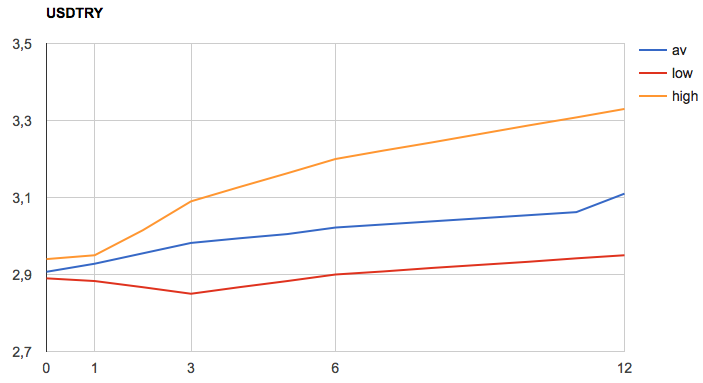| 29-07-2016 | Jan Doosje |

For many people Treasury is, as they think, something that is not concerning. Because there are many items that could be mentioned and listed here, I chose to mention the items that have effect on our daily lives, even if we are not aware of the existence of the described item. Last week I published the second part of the treasury ABC which I’ll call the Treasury ABC for normal citizens.
K is for Key Performance Indicators
Similar for almost all type of branches also implementing Key Performance Indicators can be very helpful for goal setting and monitoring your Treasury performance. E.g. a Treasury Key Performance Indicator can be the achieved return on investment, the percentage of invested capital in AAA obligations, the maximum percentage allowed investment in options or the days you can finance your running business compared with your liquidity. Of course, many more examples can be given.
L is for Loan
You can give a loan or receive a loan depending your need for cash/investment means or your “overliquidity”. A loan is the most simple instrument for Treasury purposes and helps you to finance your (temporary) need for cash or, if you are the lucky guy to give the loan, to increase your return on investment (compared to the percentage you get e.g. from banks or national governments). The loan contract defines the sum of money, the interest percentage you have to pay or the counterparty will receive, the repayment schedule and, if applicable, other conditions.
M is for Mortgage
A mortgage is generally spoken involved when you buy a house or another fixed asset (offices, factory, etc.) Not that many people have the financial means to pay for a house at once so a mortgage is then a way to finance the capital needed. It’s not easy to get a mortgage nowadays because there are a lot of regulations and conditions you have to fullfil before you will get the money on a deposit. In far most of mortgages the house you buy will be the security for the bank who provides you with the mortgage. Furthermore, banks will check if you have enough capacity to pay back the mortgage timely, if are a trusted person, the value of the house when you have to sell it unexpectedly when e.g. you become ill or lose your job.
N is for (Treasury) Note rates
A treasury note rate gives you information of the return of investment if you buy notes from a government. The rate depends of course on the time and risk of the note. If you buy a note from the Greek government you will get a higher yield then a note from Germany but the risk if you will lose your money is higher with the Greek note. Furthermore the yield depends on the kind of security (in time) you buy. The yield for long term notes will mostly be higher then a note for a month. So two main ingredients define the yield you will get; risk and the duration.
O is for (Treasury) Officer
In larger organisations you will find one or more treasury officers which are involved in daily operations in Treasury and also in Treasury policy. As Treasury has its own habits and language it’s important to know what you do in the field of Treasury and are aware of the risks. We have seen a lot of organisations gone (almost) bankrupt because they thought they knew what they were doing but it turned out to be, in some cases, exact the other way around. Therefore it is advised to have one or more educated Treasury officers in your organisation.
P is for Pension Fund
For some people the question of the solvency of your pension funds (if you have any) is more relevant than for others. Mostly your own age is an important “trigger” or awareness around Pension Funds. There are several kinds of Pension Funds e.g. for government employees, employees from a certain branch or a pension fund from a certain private company. Anyway, in all cases, you, as a contributor to the pension fund, want to have certainty to receive a pension when you are entitled to it and that the amount you will get is the same you expected. Nowadays, since the financial crises from 2008, the uncertainty of obtaining your proper pension is bigger because the yields which pension funds achieve are lower than they should be to adhere to long-term achievements.
Q is for Quote
A quote is an offer from a counterparty which they give you when calling them. For instance, if you call the bank and want to buy USD and you ask “Can I get a quote for 1000 USD?” and the answer is “You can buy USD 1000 for € 98.” and you accept it, the deal is done. So take care saying “yes” or “I accept” because you have to buy the USD 1000 for the amount of euros but also the bank has to deliver for that price. A quote is therefore not as “free” as it sounds.
Talking to our readers and contributors we have noticed that there are treasury related words with many different understandings. We’ve asked Jan Doosje to kick off a treasury ABC. Of course this is not binding and there are letters which can be connected to several treasury related words We need your input to make a complete treasury ABC. Would you like to contribute to the treasury ABC? Please contact our community manager Stephanie Derkse via [email protected].

Jan Doosje
Owner of Fimterim Advies & Consultancy
 At the end of this year Theo van der Nat will retire. He is professor, working for the Amsterdam based Vrije Universiteit, for the (Dutch) Register Treasurer post graduate education and other organisations. If there was ever one, he is/was the guru of the Dutch treasury community. He deserves his “emeritaat” and brings me to the question: “Who is our treasury guru?”.
At the end of this year Theo van der Nat will retire. He is professor, working for the Amsterdam based Vrije Universiteit, for the (Dutch) Register Treasurer post graduate education and other organisations. If there was ever one, he is/was the guru of the Dutch treasury community. He deserves his “emeritaat” and brings me to the question: “Who is our treasury guru?”.


 SEPA reduced the necessity to maintain foreign bank accounts in Euro-countries to a great extent, but there can still be substantial advantages to operating such accounts; an overview.
SEPA reduced the necessity to maintain foreign bank accounts in Euro-countries to a great extent, but there can still be substantial advantages to operating such accounts; an overview. Jan Meulendijks – Cash management, transaction banking and trade professional
Jan Meulendijks – Cash management, transaction banking and trade professional Afgelopen week verscheen op CFO.nl het artikel
Afgelopen week verscheen op CFO.nl het artikel 









 Simon Knappstein
Simon Knappstein

 Vorige week publiceerden we in samenwerking met Peter Schuitmaker al het artikel:
Vorige week publiceerden we in samenwerking met Peter Schuitmaker al het artikel: 
 De compensatieregeling voor ondernemers met een rentederivaat blijft stof opwerpen. Gisteren verscheen het nieuws dat de Deutsche Bank zich waarschijnlijk moet verantwoorden voor de rechtbank omdat deze zich als enige weigert aan te sluiten bij de compensatie regeling die onlangs werd voorgesteld door een onafhankelijke commissie. (bron:
De compensatieregeling voor ondernemers met een rentederivaat blijft stof opwerpen. Gisteren verscheen het nieuws dat de Deutsche Bank zich waarschijnlijk moet verantwoorden voor de rechtbank omdat deze zich als enige weigert aan te sluiten bij de compensatie regeling die onlangs werd voorgesteld door een onafhankelijke commissie. (bron: 

